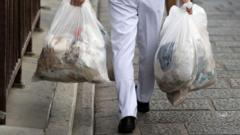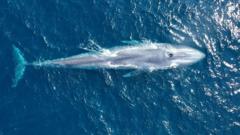In a proactive response to the Fukushima nuclear disaster, residents of Odaka, Japan, have banded together as citizen scientists, using measuring equipment to track radiation levels in their environment, aiming to empower their community in the face of ongoing health risks.**
Local Heroes: Citizen Scientists Monitor Fukushima's Lingering Radiation Threats**

Local Heroes: Citizen Scientists Monitor Fukushima's Lingering Radiation Threats**
Community members in Odaka, Japan, take radioactive fallout measurement into their own hands, confronting the ongoing consequences of the 2011 nuclear disaster.**
Every year, as winter fades in northern Japan, Tomoko Kobayashi and her dedicated group of residents embark on an essential mission: monitoring radiation levels in their hometown of Odaka. This independent initiative arises from the community's deep concern regarding lingering radioactivity from the catastrophic Fukushima Daiichi nuclear disaster in March 2011, precipitated by a devastating tsunami.
Kobayashi, who operates a family-run inn that has welcomed guests for generations, now finds herself armed with new knowledge about radiation measurement. Each day during the warmer season, she and her fellow residents traverse a predetermined route, stopping regularly to use a survey meter, a device functioning similarly to a Geiger counter, to detect gamma rays—the key indicators of radioactive particles that remain scattered across their landscape.
In a bid to overcome the lack of detailed government-provided radiation maps, the citizen scientists diligently compile their findings. They create color-coded maps that clearly indicate varying levels of radiation throughout the area, relying on hundreds of data points they establish during their extensive monitoring. This homegrown effort is designed not just to safeguard their health and wellbeing but also to inform visitors about the real-time dangers posed by radiation.
Despite the official narrative claiming the situation has stabilized in the aftermath of the accident, Kobayashi and her team remain adamant that the threat persists. “The government wants to proclaim that the accident is over, but it isn’t,” says the 72-year-old community leader. She expresses her concerns regarding the safety of consuming locally sourced food: “The only way to know for sure is to do the measuring ourselves,” she asserts.
Through their unwavering resolve, the residents of Odaka embody a model of community resilience and scientific inquiry as they confront the challenges posed by the fallout of the past decade. Their work not only calms personal fears about living in a radiation-affected region but serves as essential activism, demanding accountability and vigilance from their government regarding public health and safety.






